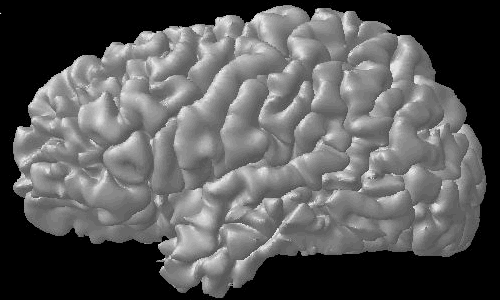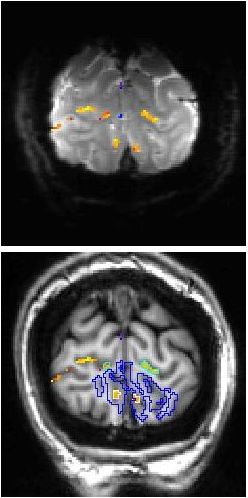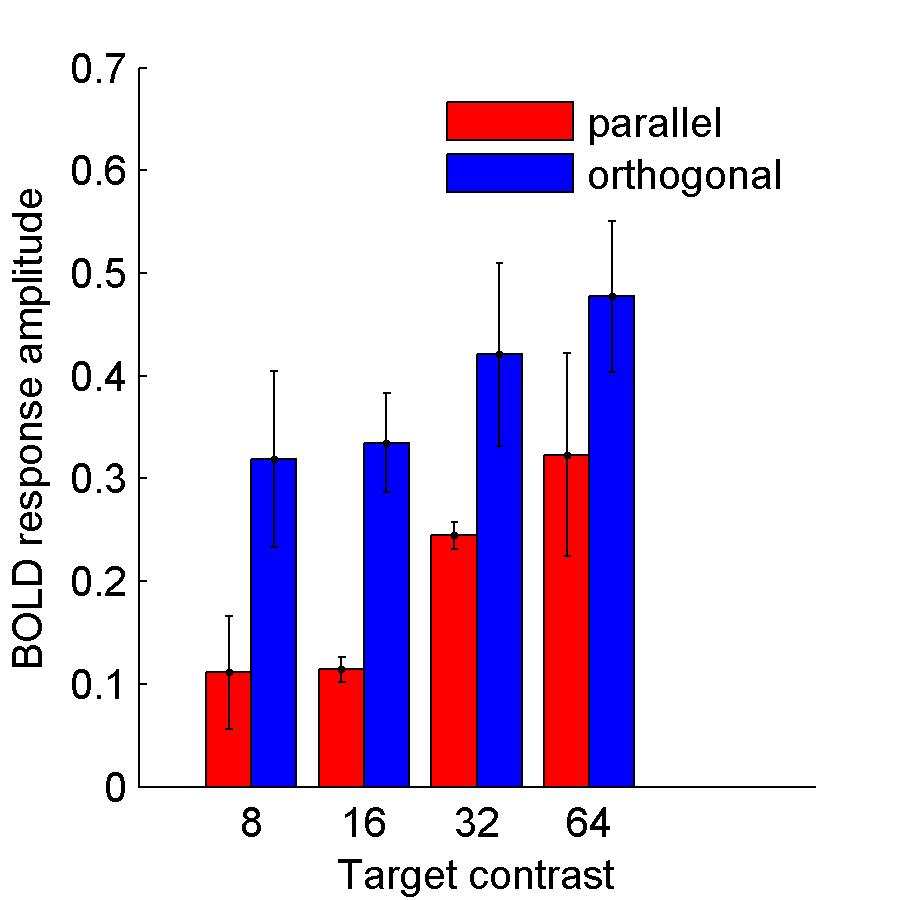
V1 BOLD: Gabors with parallel vs. orthogonal flankers
We first tried this at 3T with an event-related paradigm. In spite of getting excellent localization of individual Gabor patches (which made the cover of Vision Research), we found a pattern of results we didn't expect: the BOLD response to a Gabor decreases as the contrast increases when the flanking Gabors are parallel to it. We've considered many possible explanations for this: the BOLD responses in this case is proportional to the strength of the inibition, the BOLD response reflects a local computation of 2nd-order contrast, or neuro-hemodynamic coupling is different when local inhibition dominates. The 2nd option (above) is my current favorite, although see the little blurb on our modeling efforts for a discussion of why the local population response might be masking the inhibition we're trying to detect.
Now we're trying this with a block design at 7T, with 1 mm isotropic GE BOLD. Preliminary data are beautiful -- beautiful EPI data (below, left), very clear localization of Gabor elements in V1 & V2 gray matter (below, middle: blue shows V1 gray matter, green line indicates V2 ROIs), great contrast-to-noise ratio. The results, alas, are not the same as our first study. Instead, they match the standard prediction of a suppressed but monotonically increasing response to the Gabor elements with parallel flankers. Now we've got our work cut out to figure out why the difference! My prediction: an interesting neuroscience difference in the perception of the patterns when presented in a block vs. event-related design. In a block design, the flankers are always present, and the targets come and go. So the image is parsed in a way that segments these 2 parts of the pattern. In an event-related design, the entire pattern appears together ... the parallel targets are grouped as part of the pattern and the important image contrast is the 2nd-order contrast (as opposed to the segmentation of the center from the flankers, which happens in the case of the orthogonal flankers in both cases, and the parallel flankers in the block design). Exactly how to prove this hypothesis is an interesting problem we're working on ...
home
people
projects
publications
tutorials & data
hall of shame

